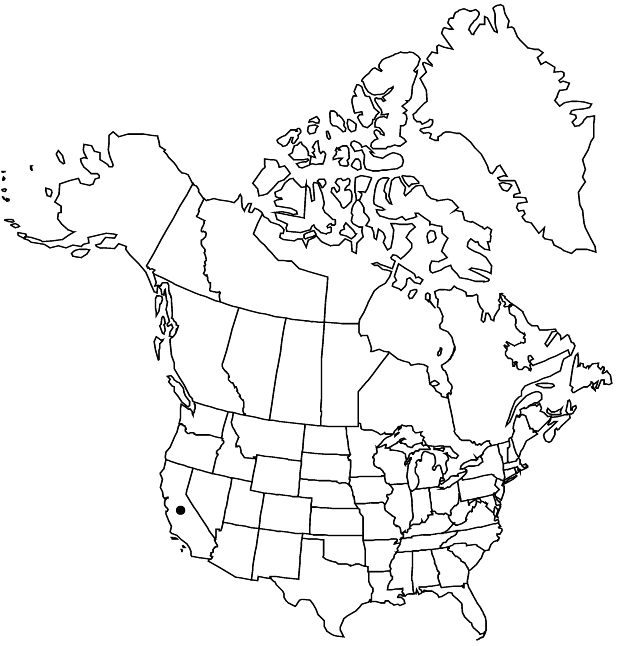Dudleya stolonifera
Bull. S. Calif. Acad. Sci. 48: 105, plates 13, figs. b, c, 14–16. 1950 ,.
Caudices simple apically, to 10 × 1.5–3 cm, axillary branches to 5 cm × 3–8 mm. Leaves: rosettes solitary, 15–30-leaved, (flattish), 5–12 cm diam.; blade bright green, often maroon-tinged abaxially and towards apex, oblong-obovate, 3–7 × 1.5–3 cm, 3–4 mm thick, base 1–2 cm wide, apex short-acuminate, surfaces not farinose, not glaucous. Inflorescences: cyme (ascending), simple or 1–2-branched, flat-topped; branches not twisted (flowers on topside), simple or 1 times bifurcate; cincinni 2–3, 3–9-flowered, circinate, 1–6 cm; floral shoots 2–25 × 0.2–0.4 cm; leaves 15–25, spreading, blade cordate-ovate, 8–13 × 5–7 mm, apex acute. Pedicels erect, not bent in fruit, 5–8 mm. Flowers: calyx 3–4 × 5.5–7 mm; petals connate 1–2 mm, bright yellow, 10–11 × 3–3.5 mm, apex acute, sometimes tips outcurved; pistils not connivent, suberect, (broadened distal to base). Unripe follicles ascending. 2n = 34.
Phenology: Flowering May–Jul.
Habitat: Sheer, north-facing cliffs
Elevation: 10-300 m
Discussion
Of conservation concern.
Dudleya stolonifera is endemic to cliffs in the San Joaquin Hills, Orange County, where it is known only in about six areas; it is seriously endangered (California Native Plant Society, http://cnps.web.aplus.net/cgi-bin/inv/inventory.cgi). It grows on north-facing cliffs of middle Miocene sandstone, commonly nearly vertical and sometimes even overhanging. There it is common with mosses and lichens in a very thin layer of soil—often less than 1 cm. It is usually the first and commonly the only vascular plant in this habitat, although sometimes it appears with Polypodium californicum and in less-steep places with various others.
Dudleya stolonifera is the only species of the genus that normally forms axillary vegetative branches; in all others, except on injury, normally either the caudex is unbranched and the rosette solitary or the caudex divides into two at the apex, so the rosette divides into two. Dudleya stolonifera is remarkable also for the broad, low calyx and for the combination of erect petals with ascending predehiscent pistils like those of subg. Stylophyllum.
In Aliso Canyon, the only place where Dudleya stolonifera grows with D. edulis, they form occasional hybrids—some intermediate, some apparent backcrosses approaching one parent or the other. In none of the hybrids did C. H. Uhl find evidence of irregularity in meiosis (R. V. Moran 1949).
No type was designated for the name Dudleya alisoensis P. H. Thomson, which therefore was not validly published. The taxon Thomson described was clearly D. stolonifera.
Dudleya stolonifera is in the Center for Plant Conservation’s National Collection of Endangered Plants.
Selected References
None.
